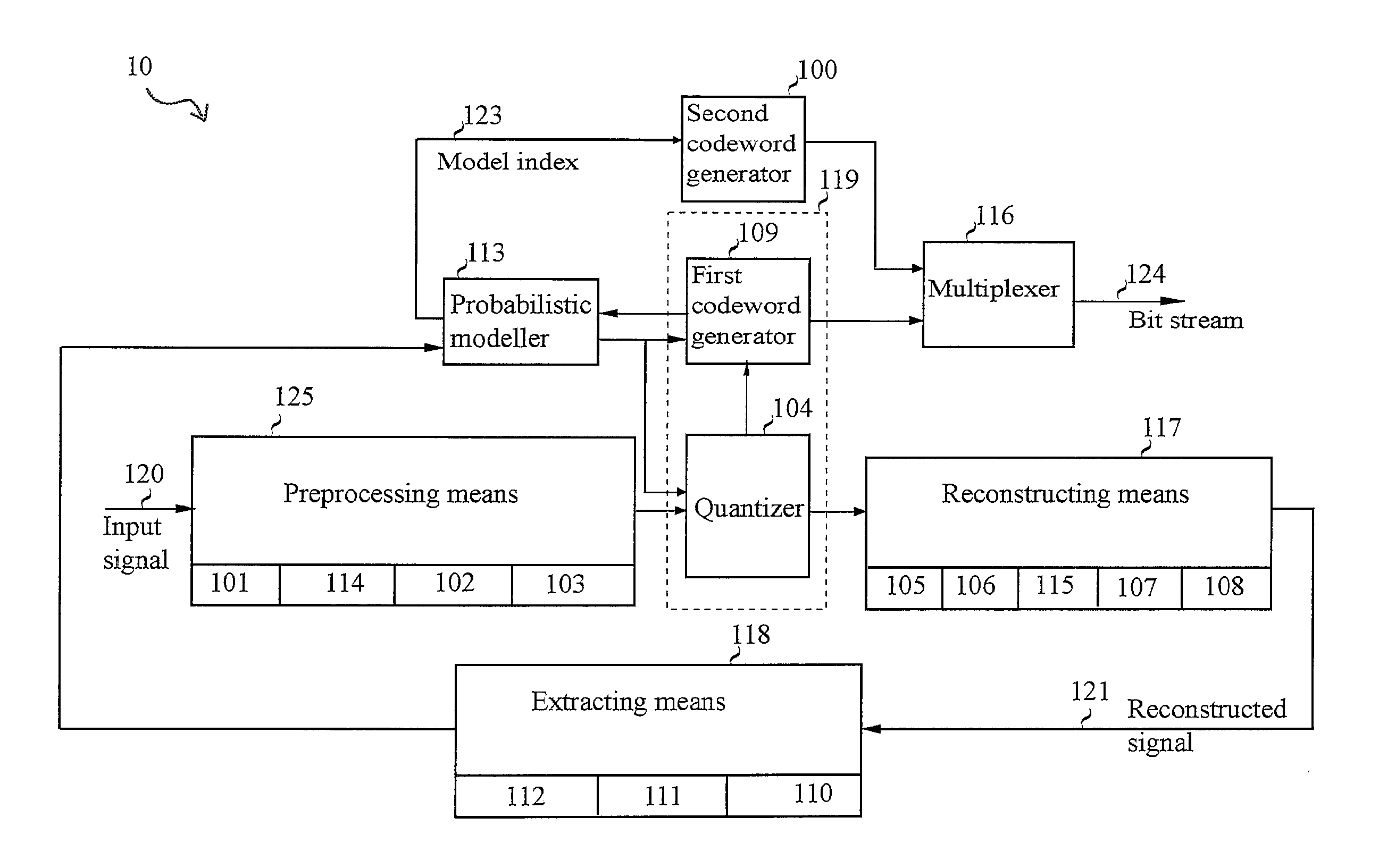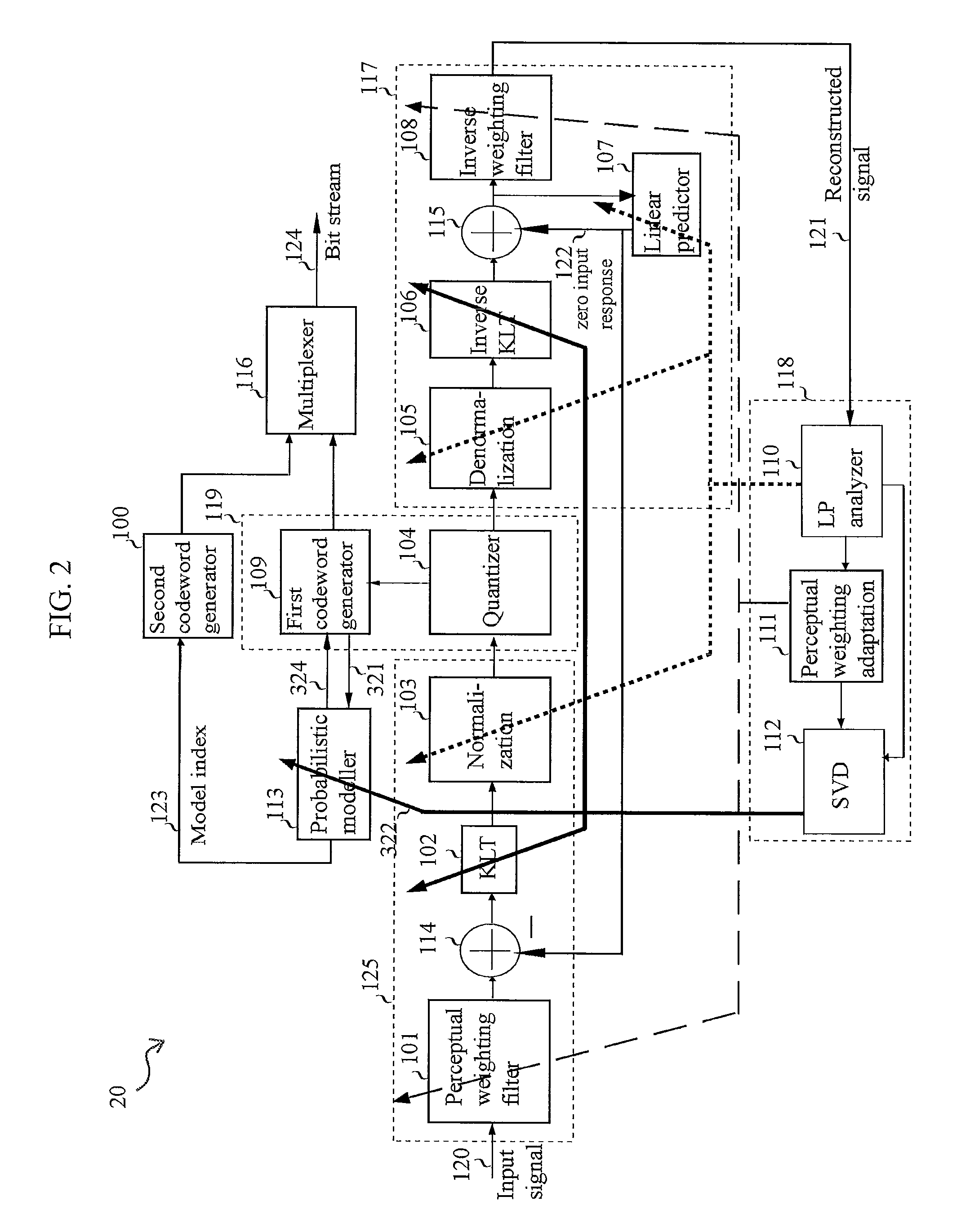Low-delay audio coder
a low-delay, audio-encoding technology, applied in the field of low-delay audio-encoding, can solve the problems of uncountable set of quantization cells of uniform size and shape, unfavorable encoding of audio signals, and affecting the quality of audio signals, so as to reduce the average bit rate without significant increase, and reduce the side information ra
- Summary
- Abstract
- Description
- Claims
- Application Information
AI Technical Summary
Benefits of technology
Problems solved by technology
Method used
Image
Examples
Embodiment Construction
[0042]With reference to FIG. 1, a first aspect of the present invention will be described.
[0043]FIG. 1 shows an apparatus or system 10 for encoding an input signal 120, such as a digital audio signal or speech signal. The input signal 120 is processed on a segment-by-segment (block-by-block) basis.
[0044]A signal model suitable for encoding a current signal segment of the input signal 120 in an encoder 119 is provided by a modeller 113, also called probabilistic modeller 113 in the following. The signal model output from the modeller 113 is also called probabilistic model or combined distribution model in the following and corresponds to a probabilistic model of the joint distribution of the signal samples or segments. The modeller 113 obtains the combined distribution model by adding at least one first distribution model and at least one fixed distribution model, each of the distribution models being multiplied by a weighting coefficient. The first distribution model is associated w...
PUM
 Login to View More
Login to View More Abstract
Description
Claims
Application Information
 Login to View More
Login to View More - R&D
- Intellectual Property
- Life Sciences
- Materials
- Tech Scout
- Unparalleled Data Quality
- Higher Quality Content
- 60% Fewer Hallucinations
Browse by: Latest US Patents, China's latest patents, Technical Efficacy Thesaurus, Application Domain, Technology Topic, Popular Technical Reports.
© 2025 PatSnap. All rights reserved.Legal|Privacy policy|Modern Slavery Act Transparency Statement|Sitemap|About US| Contact US: help@patsnap.com



